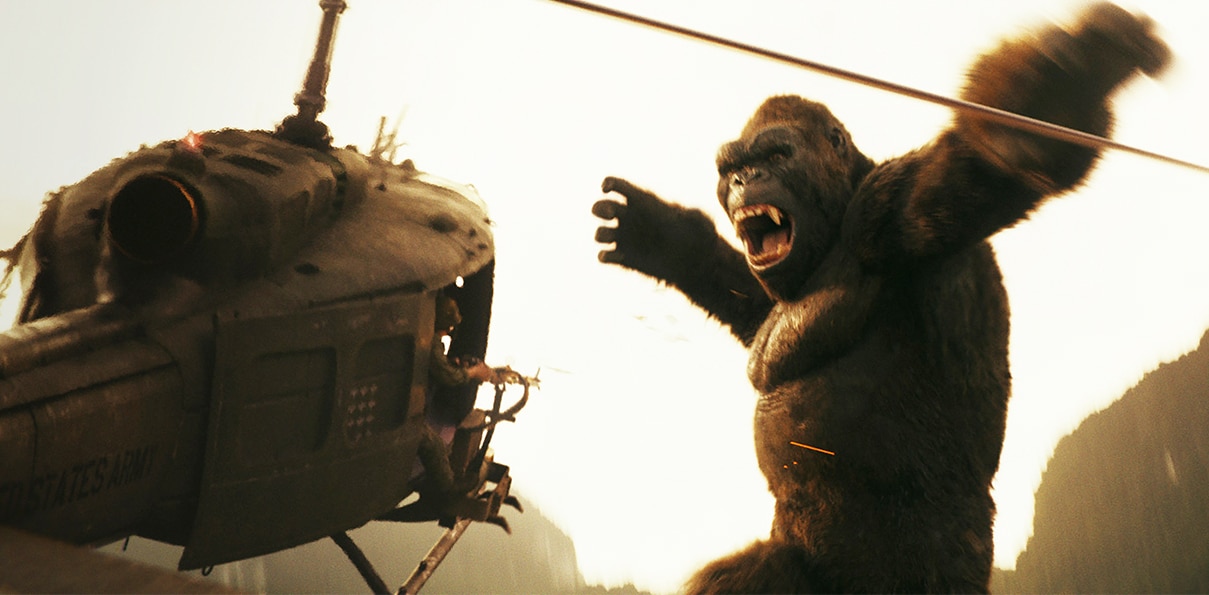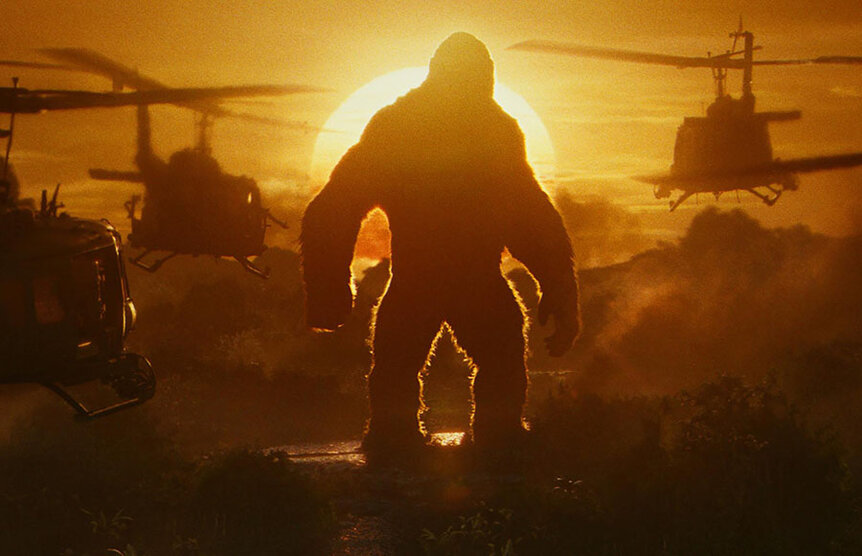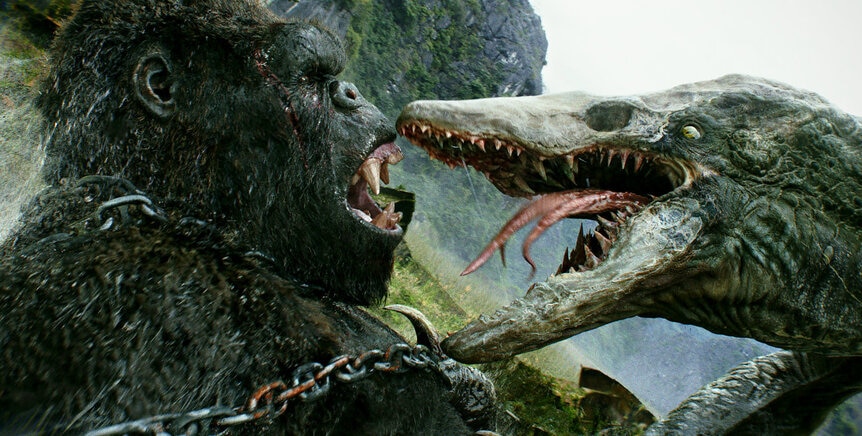Create a free profile to get unlimited access to exclusive videos, sweepstakes, and more!
'Kong: Skull Island' was the update that the 8th Wonder of the World needed
We're celebrating Kong: Skull Island's 5th anniversary with a look back at why this movie is one of the best things to happen to the big ape.

Kong: Skull Island is a period piece.
Despite coming out in 2017 — 5 years ago today — it is not set in what was then the present day, like two of the three King Kongs that came before it. Instead of being set in the 1930s, like Peter Jackson's 2005 King Kong, which aped the setting of the original 1933 movie, Skull Island is set in the shadow of the Vietnam War in 1973. And yet, it's by far the most modern take on the classic King Kong story because it does away with many aspects of the story that seem like they're essential. Skull Island isn't King Kong as we know him, but it's a fitting update to the Eighth Wonder of the World.
The basic King Kong story goes like this: White men (and one beautiful woman) go to a mysterious island. There are natives there who worship a gigantic gorilla, and they capture the beautiful woman to sacrifice her to the gorilla. However, the gorilla kind of hits it off with the woman, protecting her from dinosaurs and other monsters that live on the island. The men rescue the woman, but, perhaps more importantly, they capture the gorilla and bring it back to NYC. Here, they think they can make some money off of it. The gorilla escapes his chains, grabs the woman, and climbs to the top of the tallest building in the city. Airplanes shoot the gorilla and he falls to his death, but, really, it was beauty who killed the beast.
The three previous King Kong movies essentially followed this basic template. 1976's King Kong changed the reason why the men were going to the island (for oil rather than to shoot a movie), didn't feature any dinosaurs, and had Kong climb the World Trade Center rather than the Empire State Building. Peter Jackson's Kong largely just expanded upon the original movie with some updates. (The King Kong movies made by Toho, the Japanese studio behind Godzilla, are a slightly different story, but even still many of the same tropes are present.)
Even the short-lived Broadway stage adaptation of King Kong followed the same rough story, although it attempted to modernize itself in slightly clumsy ways. There are no natives in the play — not the worst thing, since the portrayal of savage, invariably non-white natives is inherently problematic — and the beautiful woman, Ann Darrow, is so explicitly not a damsel in distress that it feels forced and more than a little tiresome.
That play — which, to its credit, did have an extremely dope and cool giant King Kong marionette — is a good example of how it can be hard to update King Kong, a product of the 1930s, for modern audiences. I bring this all up not to cancel 1933's King Kong, as it is one of the greatest movies ever made. It just is a movie that was made in 1933. There are parts of the plot — superstitious Black natives who are awed by a blonde white woman, the implicit argument that everywhere in the world is just a setting for a white man's adventure — that don't really need to be made again in the 21st Century. And, beyond the somewhat tired issue of whether or not a thing is “problematic,” the simple fact is that we've already gotten three cinematic tellings of that version of the King Kong story.
If we're going to keep making movies about a giant ape (and we should, giant apes rule), it's worth looking at ways to tell a different story. Kong: Skull Island still has most of what fans need from a Kong movie. There is a giant ape — more giant than ever before, in fact. There are some visitors to the island that are wildly out of place and suffer for their hubris. There are natives and a big wall, but these guys are pretty chill actually and aren't portrayed as savages. Kong and the beautiful woman have a little moment but to be honest, the relationship between Brie Larson's character and Kong, slight as it was, felt a little forced.
No, Kong: Skull Island is about Kong taking down helicopters, a Vietnam vet (Samuel L. Jackson) going all Heart of Darkness on an oversized primate, and a moment where Kong uses a giant chain to fight a giant snake-lizard. (It is also about John C. Riley giving a performance that is funnier, better, and more emotionally resonant than anything else in the movie. He's the Ninth Wonder of the World, imho.) Skull Island never leaves the titular Skull Island, and Kong doesn't ever climb a building and fall to his death. Neither beauty nor airplanes kill this beast.
Kong: Skull Island is not a perfect movie. The original, and parts of Jackson's 2005 remake, are better films. But, it shows that there are ways to play in King Kong's kaiju-sized sandbox without just retelling the same story. King Kong is a story from the past, with all of the positives and negatives that come with its three-quarters-of-a-century of history. It's dated.
Skull Island was something new — more than just a big ape, in chains, for gawkers to look at once again.




























